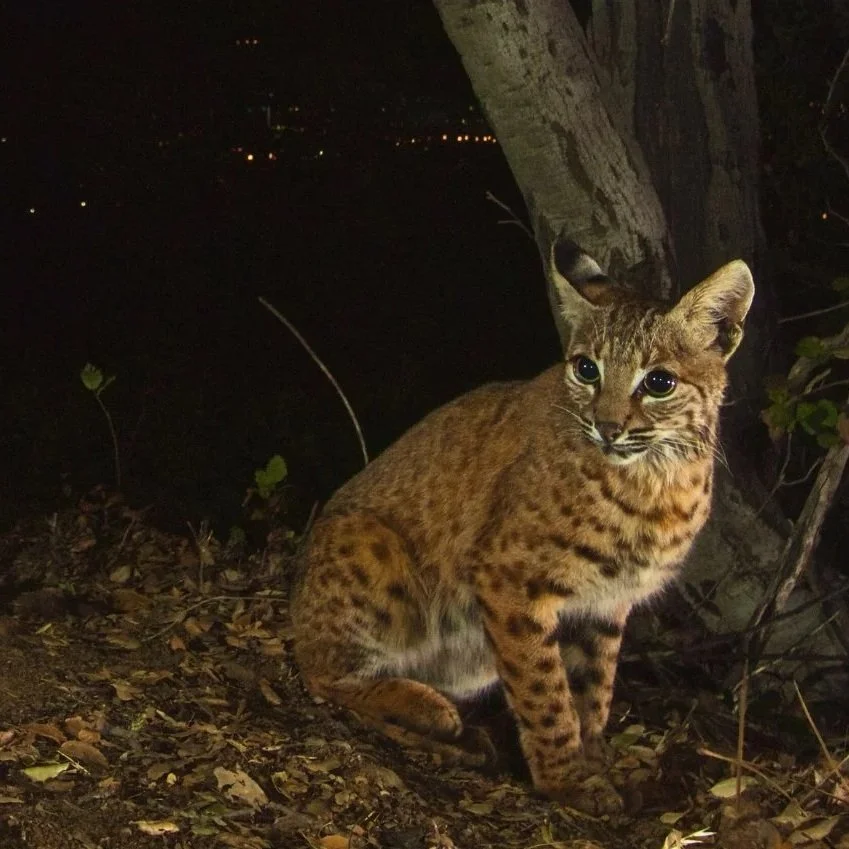How the Potomac River shapes local wildlife
/Get to know some of the local species that depend on the Potomac — and learn how you can help our wildlife friends
chickadee. Photo by Danielle Brigida via flickr (CC BY-NC 2.0)
Before humans settled along the banks of the Potomac River, plants and animals ruled the land. Teeming with fish and bolstered by forests, the river was a force to be reckoned with.
Today, the river provides food and habitat for all that reside in its rich, diverse ecosystem, from aquatic life to soaring birds to fuzzy critters.
While the river works hard to sustain wildlife, pollution and the climate crisis pose an increasing threat to local animals. Read on to learn about a few animals that live in and around the Potomac and the challenges they face.
Fish
Smallmouth bass. photo by Sam Stukel (USFWS) via flickr (Public domain)
Historically, fish populations in the Potomac were prolific, a sign of healthy waters and a balanced ecosystem. Today, 118 species of fish can be found throughout the river. These include shad, herring, and sturgeon, all of which were victims of overfishing in the past.
Restoration efforts have helped bolster shad populations, and even the now-rare sturgeon makes more appearances than in previous years. In addition, the 2015 Chesapeake Bay Agreement paved the way for improving passages in streams for herring migration.
That said, overharvesting is not the only threat that Potomac fish face today. The 2023 Potomac Report Card dives into other reasons the river’s fish are struggling to thrive, including polluted runoff, deforestation, and the presence of non-native species.
Agricultural and urban runoff increase nitrogen and phosphorus levels, leading to harmful algae blooms that deprive fish and aquatic plants of oxygen.
Polluted runoff also carries harmful toxins from trash, sewage, and pesticides, which can reduce growth and hatching, make it harder for fish to breathe, and cause skin lesions.
Endocrine-disrupting chemicals, which have been connected to herbicide use on farmland, have made some smallmouth bass intersex. These fish typically have lower sperm counts, harming their ability to reproduce.
Thankfully, there’s a natural defense against these harmful chemicals and excess sediment: streamside trees. Riparian buffers, as they’re more formally called, filter out toxins and reduce the amount that enters a river, which is why trees are essential for clean water.
Dolphins
photo by Brandon Trentler via flickr (CC BY 2.0)
Keeping fish populations healthy is also important for other river dwellers who rely on them for food.
Each summer, bottlenose dolphins visit the Potomac River and the Chesapeake Bay, and in recent years, more and more sightings have been reported.
Researchers believe that the dolphins visit the Chesapeake Bay’s shallow waters each summer to avoid predators in the open sea and take advantage of the plentiful food supply. And the Potomac River plays a particularly important role for this species.
The Potomac-Chesapeake Dolphin Project confirms dolphins’ birth and raise their newborn calves in the tidal waters of the Potomac. In fact, their team witnessed an incredibly rare live birth in the Potomac, a special experience only a handful of scientists have had.
Dolphins have been seen as far upstream in the Potomac as the Gov. Harry W. Nice Memorial Bridge, almost halfway to Washington, DC.
The river is not without its risks to dolphins though. Like other aquatic life, they’re subjected to pollution, and scientists are working to understand how pollution impacts the dolphins’ immunity to certain diseases.
Don’t miss out on the dolphin action next year! You can download the DolphinWatch app to report sightings, and keep track of where these amazing mammals have been seen along the river.
Sharks
Bull shark. photo by Daniel kwok via flickr (CC BY-NC-ND 2.0)
Yes, there are sharks in the Potomac! The spiny dogfish shark and bull shark make occasional appearances at the mouth of the river.
As their name suggests, spiny dogfish contain spiky spines along their dorsal fin. These sharks are about 3 to 4 feet long and weigh roughly 8 pounds, but don’t let that fool you! If attacked by a predator, these small but mighty sharks will inject venom via their spines into their assailant. At the other end of the spectrum, bull sharks can be up to 11.5 feet long and weigh as much as 500 pounds!
Bull sharks are the only shark that inhabits freshwater, but they also thrive in saltwater. These massive beasts have actually been caught by local anglers!
As scary as these sharks may seem, people are actually way more of a threat to them. Habitat loss (from pollution and the climate crisis) and being accidentally caught by fisherfolk are two main dangers they face.
Birds
photo by Mick thompson via flickr (CC BY-NC 2.0)
The Potomac River region provides habitat for roughly 120 species of birds and several hot spots for birdwatchers to enjoy. Many birds like to make their home in trees near rivers because they offer good sources of food.
Bald eagles flock to the Potomac to build their nests where they can swiftly hunt for their next meal. While the nation’s bird has been making a comeback, they still face threats from deforestation and the climate crisis. Recently, researchers have discovered another danger to these birds: lead poisoning.
Lead can enter the birds’ system in a number of ways. Because eagles scavenge their food, they often eat animals that were killed with lead bullets. Lead exposure can also occur from lead acid batteries, plane fuel, and power plant emissions.
Too much lead can harm an eagle’s ability to fly, decrease bone density, and cause neurological problems. A recent study found that almost half of DC’s bald and golden eagles have lead poisoning.
Although the bald eagle has not been on the endangered species list since 2007, scientists believe that this ailment has been preventing eagle populations from growing as much as they could be.
Fungi
photo by Matthew Beziat via flickr (CC BY-NC 2.0)
When you think of “wildlife,” fungi might not be the first thing that comes to mind, but this unique kingdom of organisms plays an understated role in keeping the Potomac’s ecosystems operating smoothly.
Fungi decompose organic matter, breaking down animal waste, carcasses, and even dead trees at the cellular level, and recycling these materials back into the soil.
Parasitic fungi keep populations of their host species from growing out of control. This can be particularly helpful in managing certain insects. However, this kind of fungi can also damage their host species considerably if it hasn’t evolved to develop resistance to the parasite.
Some fungi, like Glomeromycota, have developed symbiotic relationships with plants. The fungus delivers essential nutrients to a plant while receiving sugars the plant made through photosynthesis.
Fungi includes molds, mildews, and yeasts, but mushrooms are probably the most popular kind! If you’re looking to go on a mushroom foray, you don’t need to travel far: these fungi grow in abundance around the river, establishing themselves on the ground, dead trees, and other decaying matter.
An avid mushroom hunter could find about 200 different types of mushrooms in Rock Creek Park in Washington, DC. Just like the plants and animals found throughout the Potomac region, these organisms are incredibly diverse: some are delicious, like the tasty oyster mushroom; some have shown numerous health benefits, like the turkey tail mushroom; but watch out for others—with the name “Destroying Angel,” it’s no wonder this all-white mushroom is deadly poisonous. Although it’s extremely dangerous if consumed, it actually benefits nearby trees, enhancing their ability to absorb essential nutrients.
Climate threats
photo by Joy VanBuhler via flickr (CC BY-NC-ND 2.0)
The climate crisis is one of the main threats facing all of the wildlife in the Potomac region. Rising temperatures and sea levels encroach upon habitat, forcing some animals to relocate and putting more stress on wildlife.
Warmer weather also makes it easier for disease-carrying insects to survive and reproduce. More ticks are surviving through the winter, threatening not only public well-being but also animals that are susceptible to vector-borne illnesses, like the white-tailed deer.
However, another native animal in the Potomac can help out with tick populations: the opossum. These marsupials are tick-killing machines—just one opossum can kill 4,000 ticks in one day!
Opossums live throughout the East Coast and are commonly found among deciduous woods, though they can also live on farmland, marshes, and in suburbs. Their versatile diet—including bugs, worms, birds, crayfish, discarded food, and carrion—allows them to live in many environments.
While some consider them pests, opossums play an important role in local ecosystems. If you’re looking to keep these critters out of your yard, taking action against the climate crisis and deforestation is key, as opossums that might live in forested areas are being driven to suburbs as a result of habitat loss.
And, in addition to eating ticks, opossums’ immune systems also skillfully fight off Lyme disease, making it less likely for them to be carriers. Because of this, researchers believe that ecosystems with these animals help combat the disease’s spread.
Winter critters
photo by Mark Moschell via flickr (CC BY-NC 2.0)
While the climate crisis is leading to some warmer temperatures during winter, animals still must face cold weather. As winter quickly approaches, many animals in and around the Potomac prepare for the cold in various ways.
Some pack it up and head towards warmer weather. Rockfish will swim south to Virginia’s coastal waters to avoid the frigid temperatures in the Potomac. On their journey, though, they make sure to take advantage of the Potomac as a food source and bulk up by eating extra baitfish in the river.
While many birds fly south for the winter, a few locals tough out the cold weather. Northern cardinals, chickadees, and sparrows are among some of the birds you’ll see outside on snowy days.
These birds prepare for the cold by increasing their food intake. They also combat the freezing air by shivering, which activates their muscles in such a way that retains heat.
Squirrels prepare by gathering nuts—and lots of them! They bury them in shallow holes called caches, but only about 85% of these nuts are recovered and eaten. The remaining seeds have the opportunity to germinate in the spring, introducing new trees every year.
The extra layer of fat does wonders in keeping them warm. While squirrels don’t hibernate, they’ll spend more time in their cozy warm dens when winter hits.
How YOU can help our local wildlife friends! 👉
While nature provides for these critters all year round, there are certainly steps we can take to help them out:
During winter, planting native berry bushes and keeping hollowed stems in your garden provide food and habitat.
Salt levels in the Potomac and its streams have been troublingly high in recent years, so reducing salt use when it snows will help protect local fish and aquatic plants.
When you’re planning your garden in the spring, consider adding even more native plants, which have numerous benefits, from removing the need for fertilizer and herbicide to absorbing more stormwater runoff, which both prevent dangerous pollutants from entering the river.
Keep litter out of the Potomac by participating in local cleanups, or sign up for a tree-planting event to strengthen the river’s natural defense against pollutants.
Advocate for legislation that protects the Potomac and supports river-friendly growth.
The animals discussed in this blog are only a drop in the river; many more rely on the Potomac for habitat, food, and water. As the river has become inextricably integrated with human society, in the midst of a climate crisis and pollution challenges, we all need to do our part to protect the river so it can continue to serve the animals and plants that call it home.















